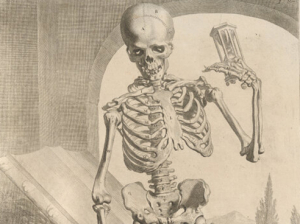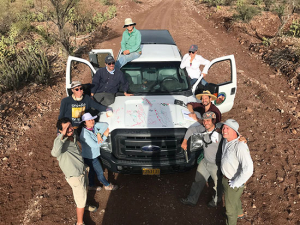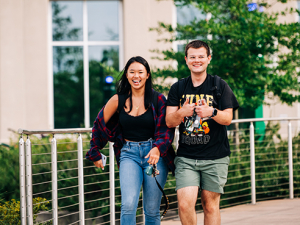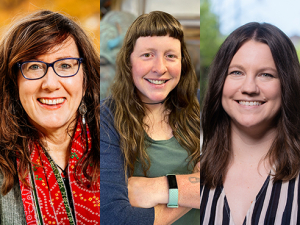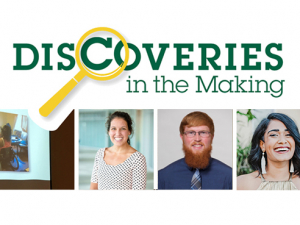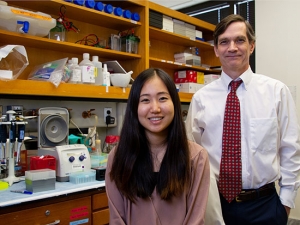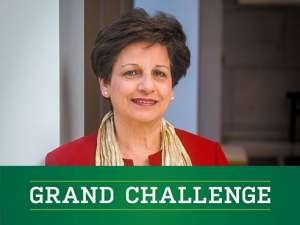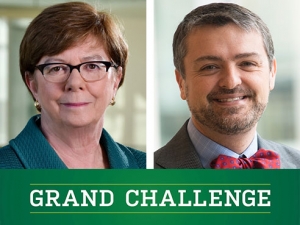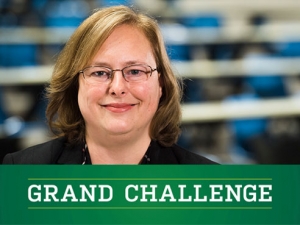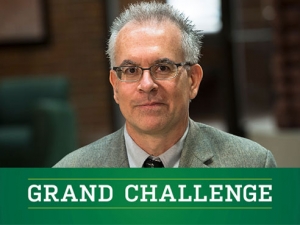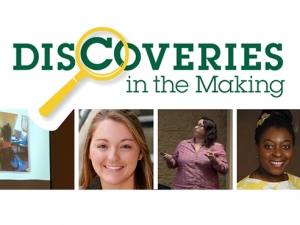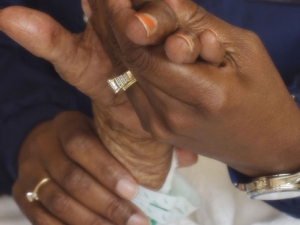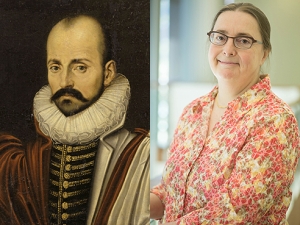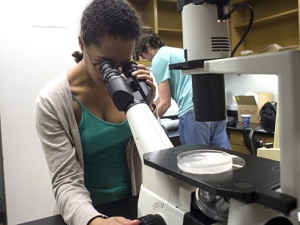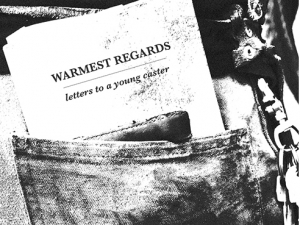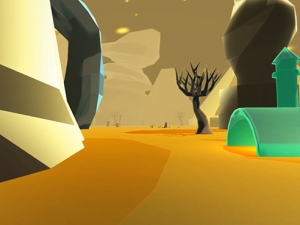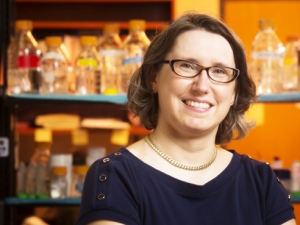Kerry Madden-Lunsford, MFA, associate professor of English, Stacey Holloway, MFA, associate professor of art and art history, and Melissa Yes, program coordinator for the Department of Art and Art History, each were awarded a $5,000 fellowship from the Alabama State Council on the Arts (ASCA) during its June meeting. The council awarded 21 grants total for writing and visual and performing arts; recipients are encouraged to use them to set aside time to create art, improve their skills, pursue professional development and more.
Madden-Lunsford, Holloway and Yes each have big plans for their grant funding, from finishing a novel to studying animal behavior and ethology to producing two new art exhibits.
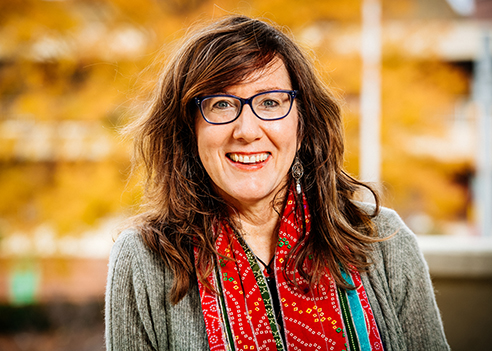 Kerry Madden-Lunsford, MFA, assistant professor of EnglishA new novel
Kerry Madden-Lunsford, MFA, assistant professor of EnglishA new novel
Madden-Lunsford plans to use her ASCA fellowship to set aside time to complete “Werewolf Hamlet,” her newest middle-grade novel and follow up to 2019’s “Ernestine’s Milky Way.” “Werewolf Hamlet” is a novel about friendship, control, adventure and letting go, following the story of fifth-grader Angus Jack Gettlefinger as he navigates his older brother Liam’s drug and alcohol abuse. She says she hopes children who read the novel learn not to blame themselves for a family member’s struggles.
“I want the kids who read this book to see Angus as an ordinary kid who gets into trouble all on his own, but who absolutely did not cause his big brother’s addiction,” Madden-Lunsford said. “It’s also a story about learning to be a family again, and in spite of the difficult subject, it’s hopefully funny and not too dismal.”
Madden-Lunsford added she’s had a unique experience with this ASCA grant process — one she hopes serves as an inspiration to others who consider applying.
“I’ve applied to this grant for nearly 10 years in a row, and I say this to let the other applicants know not to give up and keep trying,” she said. “That’s also about how long I’ve been working on this novel for kids, and this is the absolute boost I needed to finish.”
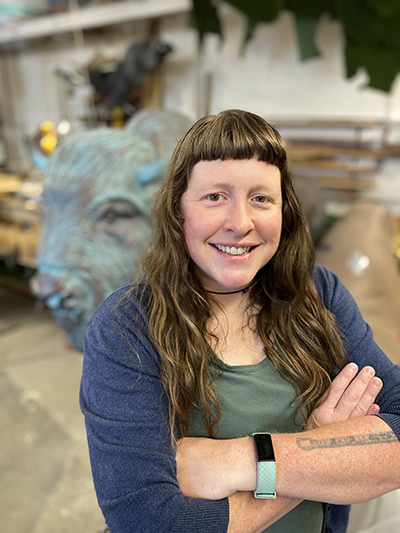 Stacey Holloway, MFA, associate professor of art and art historyA new focus
Stacey Holloway, MFA, associate professor of art and art historyA new focus
With her grant funding, Holloway plans to research ethology, or the science of animal behavior, as it relates to human behavior and sociobiological instincts. Her previous work has incorporated connected elements. During the early days of the COVID-19 pandemic, she designed kinetic, prosthetic models made from alginate impressions of her own body to recreate actions of holding a hand, receiving a kiss on the cheek or giving a high five. Her 2018 exhibit at the Abroms-Engel Institute for the Visual Arts (AEIVA), which featured sculptures of a life-size bison and scores of porcelain rabbits, squirrels, birds and bees patterned with Blue Willow floral and arabesque patterns, explored interspecies bonds and considered universal experiences of alienation, isolation and longing.
“These ideas have recently become new to my conceptual thinking, and I feel that I have not been able to participate in experiences that would evolve these ideas into a stronger body of work,” Holloway said. “This future work could then lead to stronger national and international venues and exhibitions.”
She also plans to continue exploring additional fabrication processes that would benefit her work and that of her students.
A new perspective
Yes’s fellowship will support the production of two exhibits planned for 2022, a solo exhibit at the University of Montevallo and a collaborative project for viewing at the Gadsden Museum of Art (GMA), respectively. The collaboration, titled “Finches” after Atticus Finch, the hero of Harper Lee’s 1960 novel “To Kill a Mockingbird,” will be done with other artists from or with ties to Alabama.
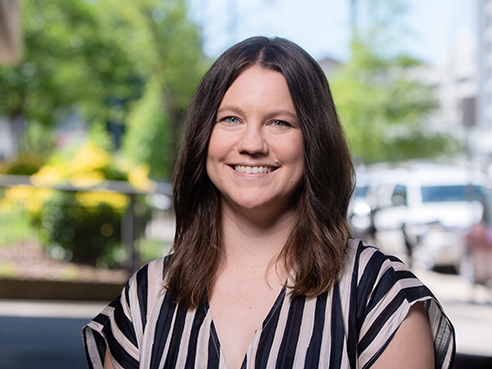 Melissa Yes, program coordinator for the Department of Art and Art History Yes and her collaborators noted that in Lee’s 2015 novel, “Go Set a Watchman,” promoted as a sequel to “Mockingbird” but now considered a first draft of the opus, the adult character of Scout is much more critical of her father, Atticus, than she was as a young child. That realization inspired the name and theme of the exhibit.
Melissa Yes, program coordinator for the Department of Art and Art History Yes and her collaborators noted that in Lee’s 2015 novel, “Go Set a Watchman,” promoted as a sequel to “Mockingbird” but now considered a first draft of the opus, the adult character of Scout is much more critical of her father, Atticus, than she was as a young child. That realization inspired the name and theme of the exhibit.
“Our use of the plural form of Finch points to the numerous Alabama father figures, both real and fictional, whose heroic statuses are scrutinized by younger generations. Family and cultural legacies are often laced with both love and shame,” Yes said. ‘Finches’ gestures toward an acceptance of that discordance and an affirmation of the need for progress and new types of heroes.”
The exhibit will be an immersive experience featuring an interactive kinetic sculpture and video projections featuring dance, music, animations and narratives told by members of Alabama communities, taken from interviews Yes will conduct.
“The project is more than an installation that viewers can experience at the GMA,” she said. “It also takes form during these interviews, dance rehearsals and studio sessions in which community members can reflect on our individual and collective legacies and envision a means to reckon with them.”
